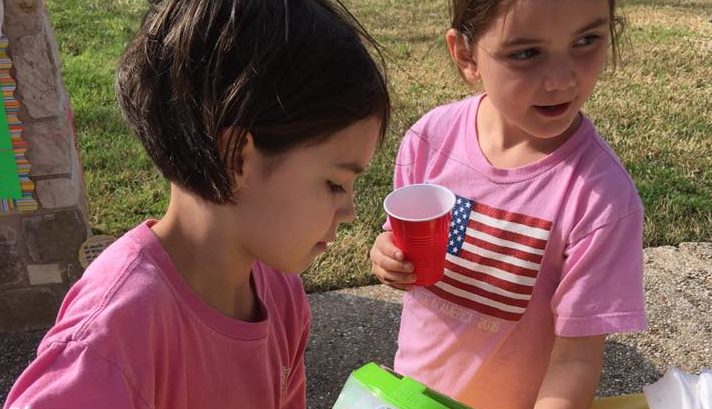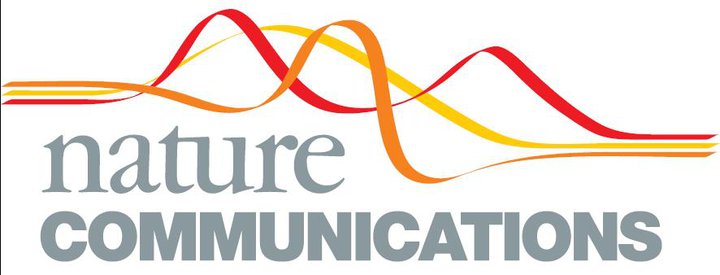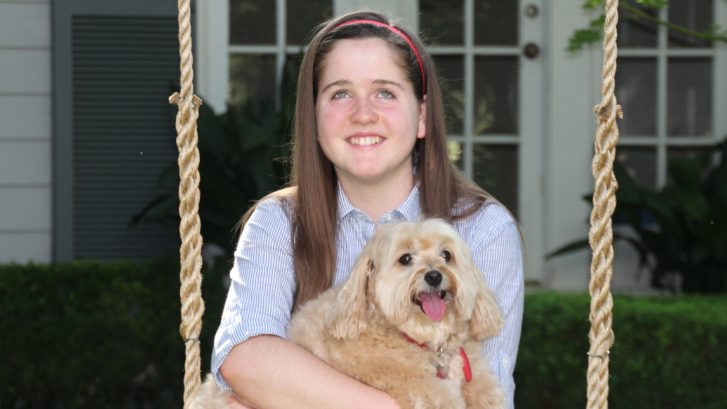May Newsletter
Take a look at our May Newsletter filled with event recaps, upcoming events in June and where we are today with the Be Project!

Take a look at our May Newsletter filled with event recaps, upcoming events in June and where we are today with the Be Project!

Our supporters shared the love this February! Be sure and keep up with the Be Project by subscribing to our monthly newsletter!

Keep up with the Be Project every month by subscribing to our monthly newsletter!

BBDF is very proud of the research we have funded over the last 8 years. We are especially honored to have worked with Drs. Marco Sardiello, Michela Palmieri and their colleagues at Baylor College of Medicine and the Jan and Dan Duncan Neurological Research Institute (NRI) at Texas Children’s Hospital. These researchers are devoted to helping patients with Batten disease and are vital partners in our efforts. We are delighted that their work was published in Nature Communications this week. Nature Communications is ranked in the top .04% of 28,000 subject journals. Read the article: http://www.nature.com/articles/ncomms14338.
The paper is important to the understanding of how healthy cells manage waste disposal, but also because it proves an important concept for treating juvenile Batten disease in mouse models, propelling us forward down the drug discovery pipeline. Today, BBDF is building on this discovery by working on industrial validation and dosing studies with Evotec, a drug discovery alliance and partnership company, to quickly advance Dr. Sardiello’s findings through the regulatory process, and ultimately to clinical trials.
Dr. Sardiello and his team have made a significant discovery and taken a giant step toward our collective goal to treat Batten disease. We are grateful to him and his team for their dedication and perseverance. In response to congratulatory emails, Marco had this message for BBDF donors, “We are proud to be working with you! This could only happen because of your continuous support. More news coming in the next few months… stay tuned!”
To read more:
Jan and Dan Duncan Neurological Research Institute at Texas Children’s Hospital press release:
http://nri.texaschildrens.org/faculty_research/sardiello_natcomm.aspx
Baylor’s press release:
https://www.bcm.edu/news/molecular-and-human-genetics/research-strategy-juvenile-batten-disease
Join us for the Youth Leadership Committee’s movie night featuring Cheaper by the Dozen 2, benefiting Beyond Batten Disease Foundation. Bring the family and enjoy a movie, popcorn, and a burger form the P. Terry’s truck!
Visit the official page or buy tickets directly at http://bluestarlitedrivein.vbotickets.com/tickets.asp?page=selectevent&eid=18573&edid=0

FOR IMMEDIATE RELEASE
Contact:
Missy Herndon
Founder, The Will Herndon Research Fund
hope@willherndon.org
713-557-0219
LAUREN TRICE NAMED DIRECTOR OF THE WILL HERNDON RESEARCH FUND AT BEYOND BATTEN DISEASE FOUNDATION
THE WOODLANDS (January 12, 2017) – Beyond Batten Disease Foundation (BBDF) is pleased to announce its recent hire of Lauren Trice, who joins the team as the Director of The Will Herndon Research Fund. In this role, Trice will oversee the management, development, and operations for the fund.
“I am honored and humbled to serve during a critical time for the research of juvenile Batten disease,” says Trice. “I believe that with the continued support of our community, we will raise awareness and funds to accelerate the research for a treatment or cure.”
Trice, a resident of The Woodlands, comes to BBDF with experience in various marketing and public relations capacities since 2006. Most recently, she served as the Corporate Market Director for the American Heart Association (AHA) in Montgomery County. In this role, she was awarded the Rome Betts Award of Excellence, which is the most prestigious national staff award given by the AHA.
“Lauren brings a wealth of knowledge, skills and a mission-based focus to our organization that we feel confident will help us meet our ultimate goal to fund a life-saving treatment to save Will and the hundreds of other children affected with this disease,” said Missy Herndon, founder of The Will Herndon Research Fund. “Collaborative research efforts have led us to potentially one of the most promising treatments in the history of juvenile Batten disease. We are grateful to have Lauren leading the local efforts to help see this research come to fruition in Will’s lifetime.”
For more information on The Will Herndon Research Fund, visit www.willherndon.org or www.beyondbatten.org.
###
The Fund was established in 2009 by Missy and Wayne Herndon, in honor of their son Will, who was diagnosed with juvenile Batten disease at the age of 6. This rare, fatal, genetic disease attacks an otherwise healthy child, beginning with vision loss, declining cognitive skills and seizures. Batten disease is fatal, most often by the late teens or early twenties. Our goal is to SAVE WILL, and the hundreds of other children stricken with juvenile Batten disease. We have HOPE, but we need your help in this race against time. To learn more or to get involved, call 832-610-5995, or visit willherndon.org.
ABOUT BEYOND BATTEN DISEASE FOUNDATION
Beyond Batten Disease Foundation (BBDF) is the world’s largest nonprofit organization dedicated to funding research for a treatment and cure for juvenile (CLN3) Batten Disease. Since its inception in 2008, over $16 million has been invested in research by leveraging donations, co-funding and strategic partnerships. BBDF is spearheading a unique, cohesive strategy, incorporating independent scientific resources and collaboration with related organizations to drive research in juvenile Batten Disease. Today there is a treatment in sight. BBDF funded research has discovered a drug that slows the progression of the disease in Batten models. The foundation has launched a 24 month $6 million campaign to advance the treatment to clinical trials. More information can be found at www.beyondbatten.org.
Beyond Batten Disease Foundation Announces New Funding for Metabolomics to Drive Biomarker Discovery in juvenile Batten disease
AUSTIN, TX –January 9, 2017—Beyond Batten Disease Foundation has launched into high gear in the new year to find ways to measure what is happening to a child’s brain in the throws of juvenile Batten disease. Children across the world are suffering from this devastating illness. The foundation has identified a potential treatment and is preparing to conduct a clinical trial this year.
Before one can conduct a clinical trial to test potential new treatments for a brain disease, one must identify harmless ways of checking up on brain cells and measuring their response to treatment. To ensure progress towards a trial is not slowed due to a lack of ways to measure brain cell responses in juvenile Batten disease, Beyond Batten Disease Foundation (BBDF) has awarded De Montfort and Oxford Universities more than $150,000 to address this problem. Investigators with a rich history of success using advanced analytic tools to measure treatment responses to cancer and other lysosomal storage diseases will apply proton (1H) NMR-linked metabolomic strategies to identify sequential changes in cell activity during disease. Once documented, these changes can be monitored during the course of a clinical trial to confirm that a drug is having its predicted effect or provide early warning signs that something is wrong. Oftentimes, measurements such as these are taken long before a patient would feel different or appear to respond to treatment.
“It is hard to discover what is happening inside individual brain cells. Unlike other parts of the body, we can’t perform biopsies or rely on blood tests to provide that information. It is very elusive. We have awarded money to a team of researchers with 20+ years of experience and a history of success identifying trial-ready biomarkers so that we can conduct early determination of how effective treatment is while carefully monitoring safety,” said Danielle Kerkovich, PhD, Principal Scientist of the Beyond Batten Disease Foundation.
“We have high hopes because of the stellar records and years of experience of the investigators involved,” said Mary Beth Kiser, President and CEO of Beyond Batten Disease Foundation.
The award, titled “Identification of New Biomarkers for Metabolomics Classification of Juvenile Disease: A Drug-Targeting Strategy”, is part of BBDF’s portfolio to carve a path from here to a cure. The successful completion of this project has the potential to substantially accelerate efforts to treat juvenile Batten disease.
ABOUT BEYOND BATTEN DISEASE FOUNDATION
Beyond Batten Disease Foundation (BBDF) is the world’s largest nonprofit organization dedicated to funding research for a treatment and cure for juvenile (CLN3) Batten disease. Since its inception in 2008, over $16 million has been invested in research by leveraging donations, co-funding and strategic partnerships. BBDF is spearheading a unique, cohesive strategy, incorporating independent scientific resources and collaboration with related organizations to drive research in juvenile Batten Disease. Today there is a treatment in sight. BBDF funded research has discovered a drug that slows the progression of the disease in Batten models. The foundation has launched a 24 month $6 million campaign to advance the treatment to clinical trials. More information can be found at www.beyondbatten.org.

Published November 30, 2016
By Madeline Rathle
Christiane Benson, 14, loves snow skiing, walking her dogs, and riding horses. However, her greatest passion is impacting others by radiating positivity and hope despite being diagnosed with Batten Disease at the age of five. Batten Disease is an extremely rare neurodegenerative condition that affects children and causes seizures, blindness, and mental and physical incapacity.
Craig and Charlotte, Christiane’s parents, noticed something was off when she was learning to read, Christiane would bring the book close to her face. After seeing an eye doctor, they saw a genetic specialist and neurologist who diagnosed her with Batten Disease. “It took our breath away,” says Charlotte. “When you get news like that, the shock of it really numbs you.”
Craig says, “A big part of our response was our faith. We just dropped to our knees.” The Bensons knew they needed to do something. “The condition is usually fatal by the late teens or early 20s, so it created a real sense of urgency and a race against time,” says Craig. Unexpectedly, the Benson’s communities of family and friends turned out to be the answer to their prayers.